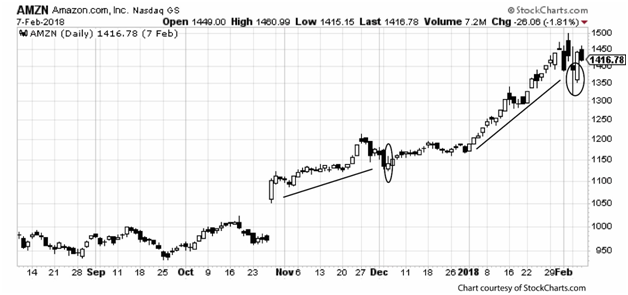
|
Uncovered put |
Covered call |
|
Dividends are not earned. |
Dividends are earned as long as shares are held. |
|
The uncovered put can be exercised, but this can be avoided easily, by closing the position, rolling it forward, or waiting for worthless expiration. |
Covered calls can be exercised, and 100 shares of stock must be delivered at the strike. Exercise can be avoided by closing or rolling the in-the-money covered call. |
|
Time is an advantage. The closer to expiration, the more rapidly time value declines. The uncovered put can be closed at a profit or allowed to expire worthless. |
Time is an advantage. The closer to expiration, the more rapidly time value declines. The covered call can be closed at a profit or allowed to expire worthless. |
|
Moneyness determines whether to close or roll the uncovered put. An out-of-the-money put will expire worthless; an in-the-money put is at risk of exercise. |
Moneyness determines whether to close or roll the covered call. An out-of-the-money call will expire worthless and can be replaced; an in-the-money call is at risk of exercise, in which case shares will be given up at the strike. |
|
Collateral is required equal to 20 percent of the strike value, minus premium received for selling the put. This is advantageous leverage when compared to the covered call. |
No collateral is required for a covered call. However, to buy 100 shares of the underlying, 50 percent must be paid, and the remaining 50 percent is bought on margin. |
The timing for opening a naked put is essential to reduce exposure to unwanted exercise. The best position for a naked put is when the underlying price moves through support and you expect price to retrace back into range.
For example, the chart for Amazon.com (AMZN) shows examples of when this occurred.

The highlighted price moves both fell below the trendline shown on the chart. Given the long-term bullish trend for AMZN, it was reasonable to expect the price to reverse to the upside. This is what occurred in both instances.
A second consideration is creation of a buffer zone between current price per share and the selected strike for the short put. Because AMZN is a high-priced stock, the opportunities for buffer zones are significant. For example, after the huge decline in February from nearly $1,500 per share down to 21,350 by February 6, anticipating a rebound would be well-timed. During the trading day of February 8 and about 30 minutes into the session,AMZN was trading at $1,416.36 per share. A couple of naked put trades to consider at that moment:
- The 1,410 put expiring in one day (Feb. 9) was at a bid of 10.05. This is incredibly rich considering the one-day expiration. The strike was six points below current price. That, plus the net $1,000 for selling the put, sets up a buffer zone of 16 points.
- The 1,362.50 put expiring in eight days (Feb. 16) showed a bid price of 13.05. This is 54 points below current price. Adding the 13 points received for selling the put, this creates a 67-point buffer zone over an exposure period of eight days. Time decay will be rapid. Typically, options expiring in one week lose 34% of their remaining time value between Friday and Monday. In this example, that spans February 9 to 12 – three calendar days but only one trading day.
The timing and buffer zone are the two keys to a successful short put strategy. Whether you select extremely short-term (one day) or a little longer (eight days), the profit potential is attractive, in large part due to the recent volatility in the market and in AMZN, which fell 150 points in two days. The extreme move in price makes the point that timing is everything with this strategy. The likely bargain hunting at such a low price makes an upward move likely. By February 8, price had always moved from the low of $1,350 to $1,416, recovery of 66 points out of the 150 points previously lost.
As with all options strategies, especially those involving a short position, this one has to be monitored every day. Because things change rapidly in volatile markets, you need to get out when you can to maximize profits or, in worst case situations, to mitigate losses. The need for a buffer zone and attractive premium levels makes the naked put a potentially profitable strategy, even for the conservative trader.
Michael C. Thomsett is a widely published author with over 80 business and investing books, including the best-selling Getting Started in Options, coming out in its 10th edition later this year. He also wrote the recently released The Mathematics of Options. Thomsett is a frequent speaker at trade shows and blogs on his website at Thomsett Publishing as well as on Seeking Alpha, LinkedIn, Twitter and Facebook.




Join the conversation
You can post now and register later. If you have an account, sign in now to post with your account.
Note: Your post will require moderator approval before it will be visible.